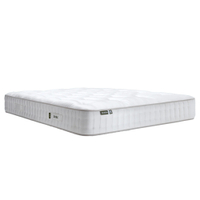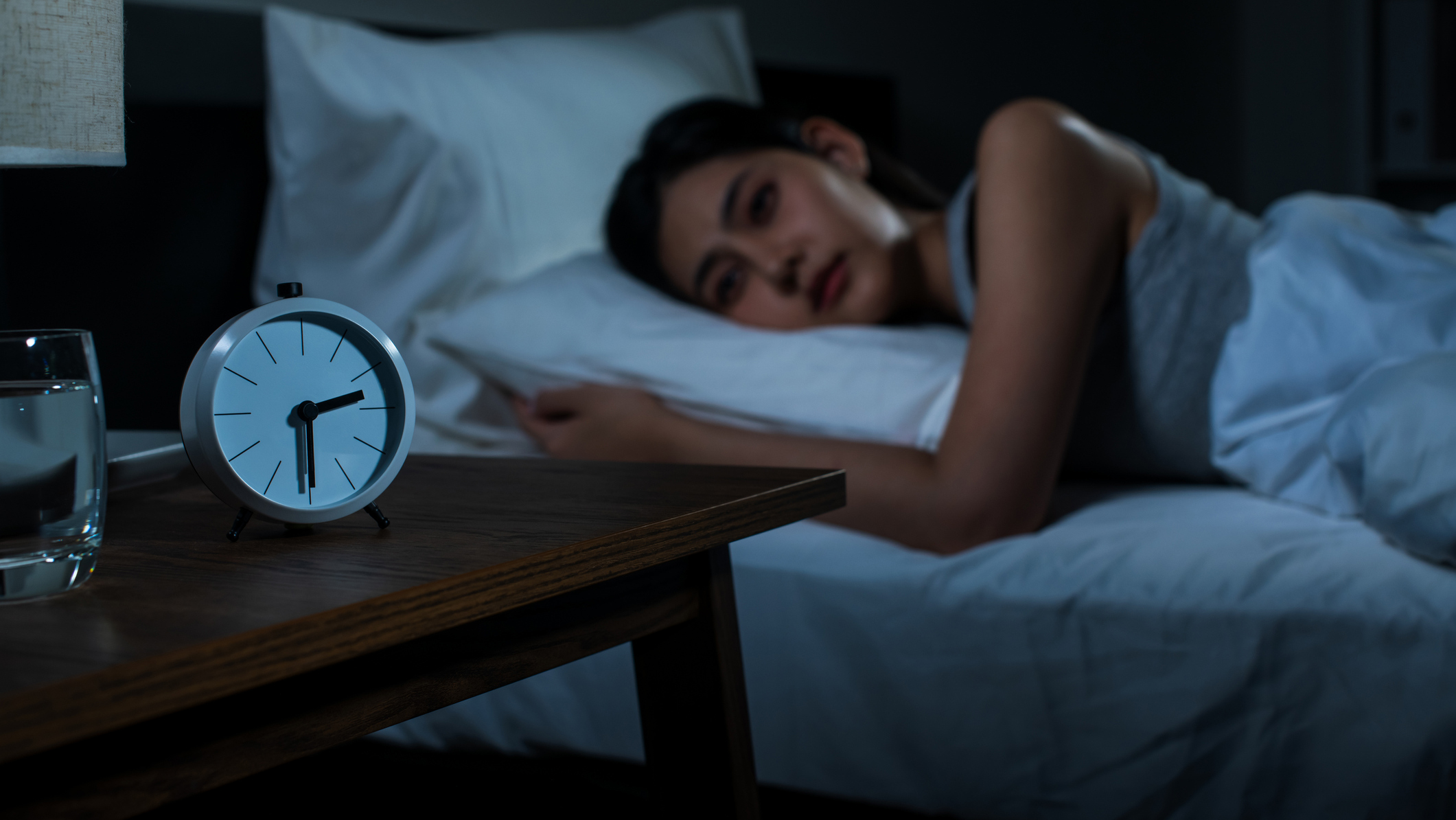I slept on the new Simba Earth Escape mattress for 3 weeks — is it worth it?
I've testing Simba's new wool-infused natural mattress. Here's what I think of it so far...

Comfort and support are the obvious priorities when choosing a mattress, but for many of us sustainability is an increasing concern. With my old mattress sagging at the center, I knew it was time for an upgrade, and for me, an eco-friendly build was important. But I have to admit, I was skeptical. Sustainable beds can only be made with a limited range of materials – can they still offer a feel and performance that matches the very best mattress?
Step forward Simba Sleep and its recently released 'Earth' range of eco-friendly hybrid mattresses. On paper the beds appeared a good match for my sleep needs (medium-firm and responsive) as well as matching my sustainability preferences, so I decided to test the Simba Earth Escape. Here are my initial thoughts after sleeping on this luxury natural mattress for three weeks...
What is the Simba Earth Escape Mattress
The Simba Earth Escape mattress is a hybrid bed that combines natural materials with the latest technological innovations, to provide you and the planet with healthier rest. As a hybrid, the Simba Earth Escape Mattress contains both springs with cushioning materials.
As a sustainable mattress, instead of foams, the Simba Earth Escape creates cushioning using help, wool, and flax. The Simba Earth Escape Mattress features six internal layers: three upper cushioning layers, and three lower spring layers.
At the top, you'll find a layer of British wool, followed by a layer of Yorkshire hemp and flax. These upper layers provide contouring cushioning. Beneath this is a transitional layer of hemp, flax, and wool, to enhance breathability and add support. Then comes the springs.
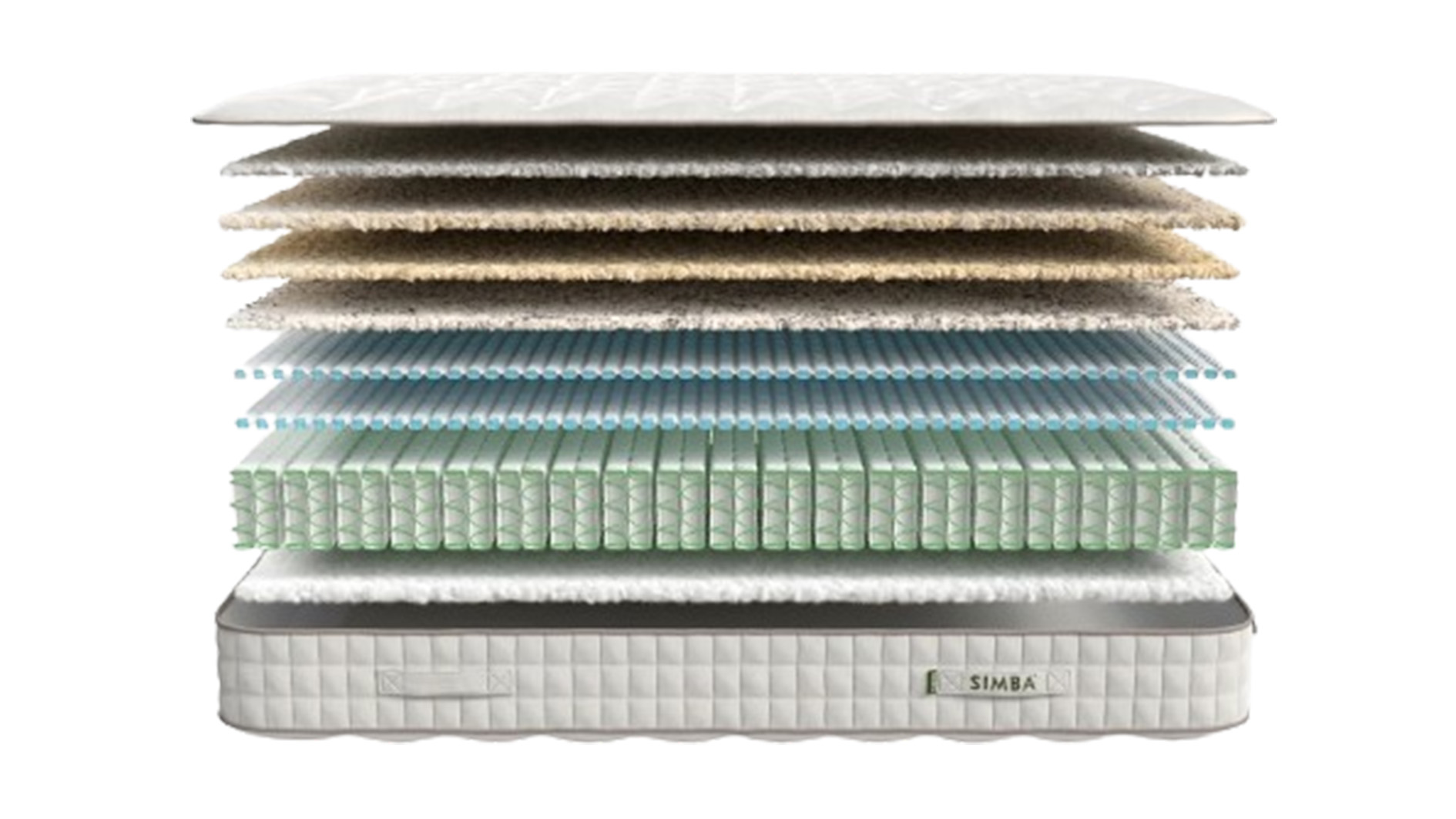
The first spring layer consists of Aerocoils; microsprings that provide responsive support. Then comes the taller steel springs, which give the sleeper enhanced support. And at the base you'll find the Quadcore springs – sonically welded welded into groups of four, these springs provide stability. Finally, the wool-vicose cover adds a silky touch to the mattress.
The Simba Earth Escape is designed for sleepers who want a premium feel, enhanced support, and an eco-friendly build. Simba classes the Earth Escape as a medium-firm mattress, which we tend to recommend to back sleepers and side sleepers who prefer extra support. From my experience, the mattress is on the firmer side, with a strong center that will keep stomach sleepers comfortable during the night.
How much is the Simba Earth Escape Mattress?
The Simba Earth Escape Mattress is a new premium hybrid bed from Simba Sleep, the brand behind some of the best mattresses in a box for people seeking a supportive hybrid bed. Part of Simba's new sustainable Earth range, the Escape is the mid-budget choice.
For a more affordable yet still sustainable mattress, consider the Simba Earth Source, or for the deluxe upgrade, check out the Simba Earth Apex (both available at Simba in the Simba Earth collection).
We haven't seen the Earth range in any monthly Simba mattress sales yet, but we're hoping to see some discounts soon. The RRP of the Simba Earth Escape Mattress is:
- Single: £1,399
- Double: £1,999
- King: £2,199
- Super king: £2,529
Why I chose the Simba Earth Escape Mattress
I knew I wanted a bed that was better for the environment, but when choosing a mattress, you have to prioritize comfort and support. As a stomach sleeper who likes to move around in the night, I prefer mattresses with a medium-firm to firm build.
When looking for a mattress that suited both my sleep needs and my environmental concerns, the Simba Earth range stood out. Promising a medium-firm feel, excellent pressure relief, and a build that was 100% recyclable, it seemed to be just what I was after.
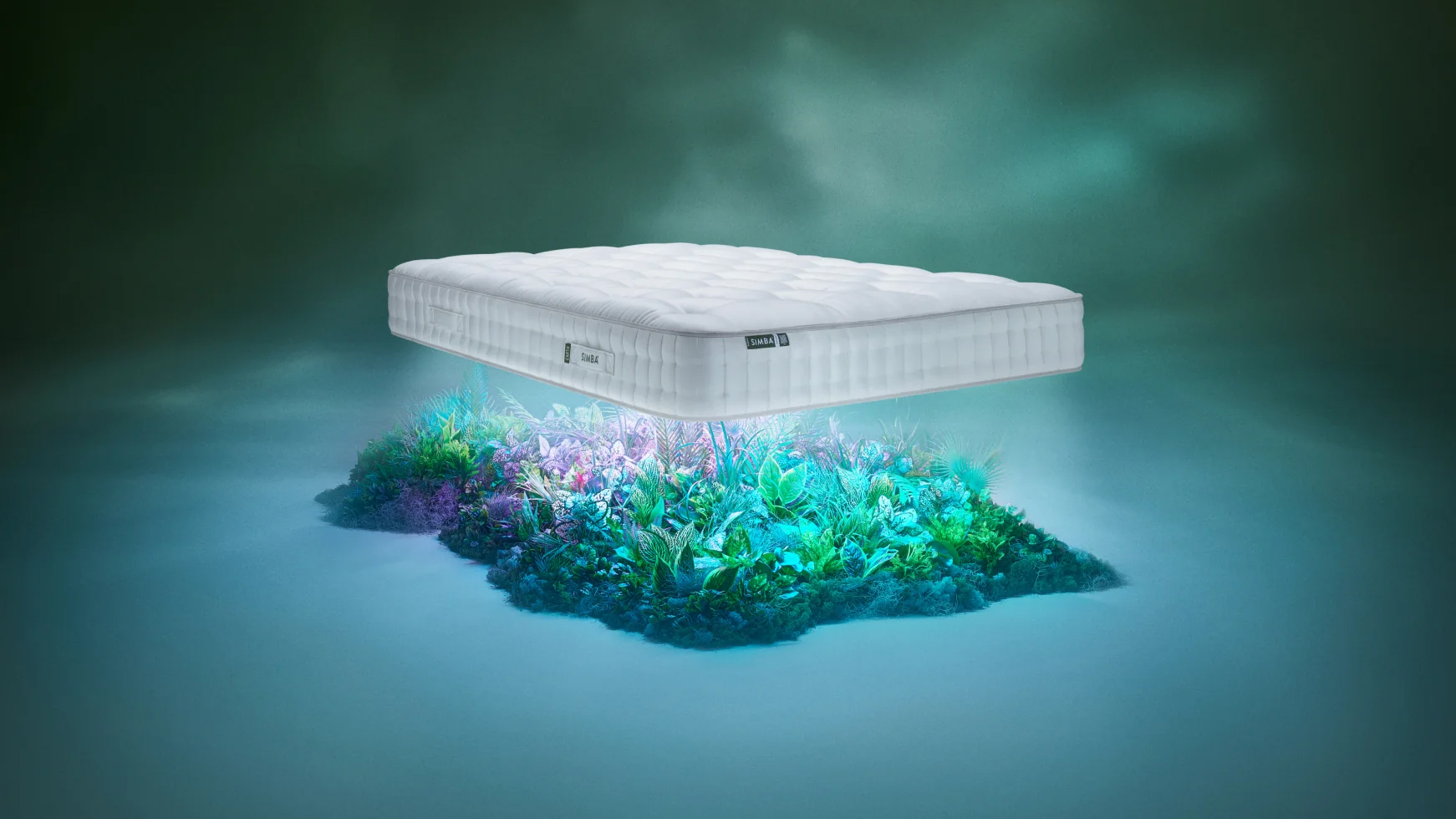
The Simba Earth Escape Mattress is a 28cm tall hybrid bed consisting of layers of springs and layers of cushioning materials – hemp, flax, and wool. The QuadCore spring base groups coils into fours to provide limited motion transfer and targeted support, while the natural comfort materials have been blended to provide pressure relief and breathability.
The Simba Sleep range is sold in the UK – for US shoppers, our best organic mattress range has other sustainable and eco-friendly beds to consider. Keep an eye on the Memorial Day mattress sales, if you're hoping to nab a bargain on a sustainable bed.
Simba Earth Escape Mattress: from £1,399 at Simba Sleep
The Simba Earth Escape Mattress is a medium-firm bed made using a mixture of classic materials and cutting-edge techniques, including glue-free sonic welded springs that absorb motion while offering adaptable support. Each mattress comes with a 200-night trial and a 10-year guarantee, plus VIP delivery. And for an extra fee (£50) Simba will take away your old bed at the same time.
Is the Simba Earth Escape mattress worth it?
The overall look of the Simba Earth Escape Mattress certainly lives up to the price tag. The silky feel and elegant quilting of the wool-viscose cover is inviting, with a sumptuous feel that's smooth against the skin. Hand-finished by craftsmen in Yorkshire, the Simba Earth Escape looks expensive.
As for the feel, while firmer than expected at first, within a few weeks I'd gotten used to the subtle contouring. As primarily a stomach sleeper, my hips and lower back appreciate how supportive the bed is from head to toe. The full body support and alignment is excellent for most back and stomach sleepers, but lightweight side sleepers might prefer something plusher.
Due to the multiple coil layers, I was expecting a bed with some bounce, but while it's easy to toss and turn on the Earth Escape, motion doesn't travel. If you share a bed, your partner shouldn't feel you move around.
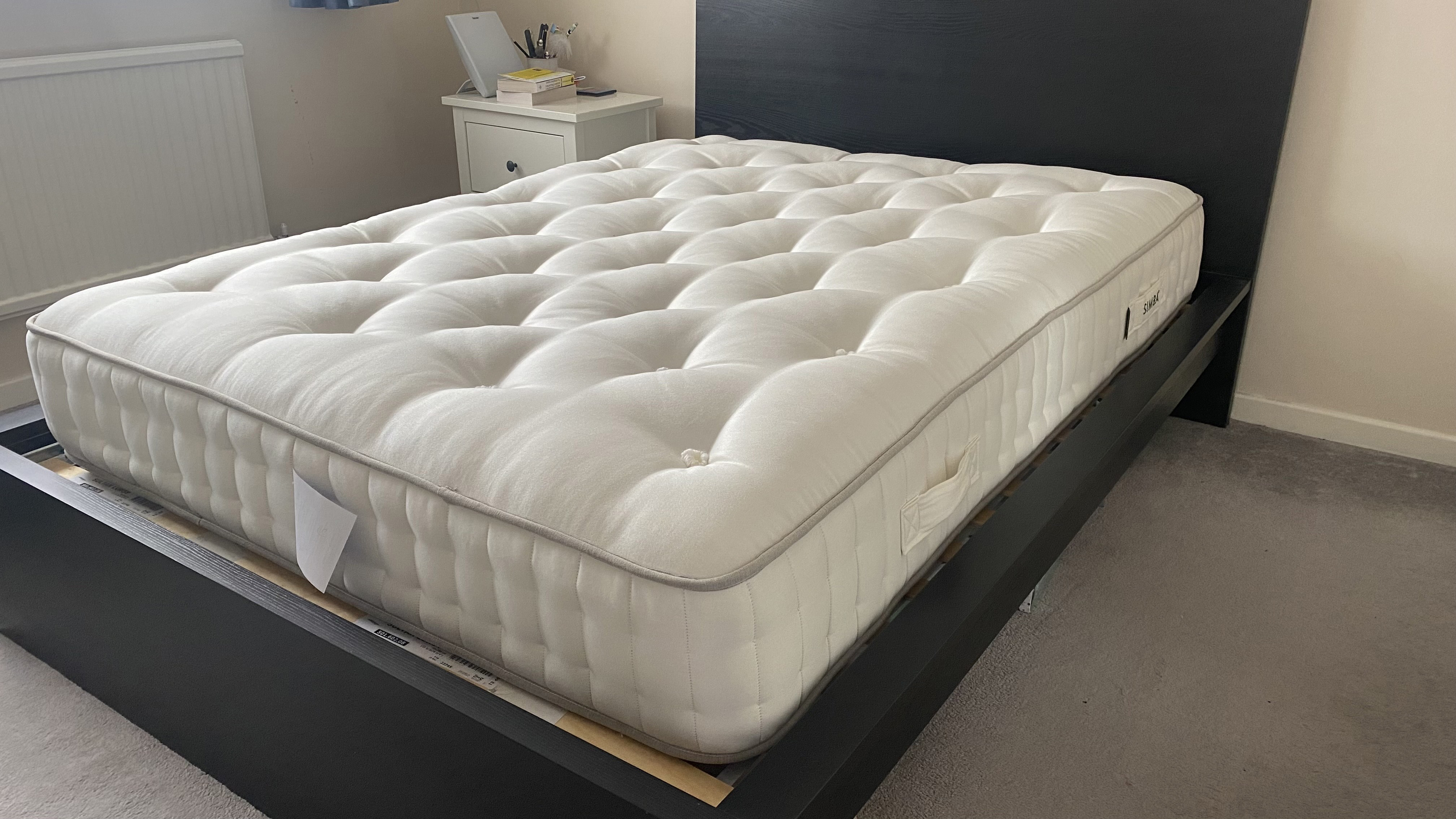
The temperature regulation was also impressive, thanks to that combination of springs and natural materials. The only performance feature I was disappointed in was edge support: although it wasn't a problem when lying down, if I sat on the edge of the bed, I could feel it dip.
I would class the Simba Earth Escape mattress as worth the money, especially for stomach and back sleepers. As well as an impressive look and a comfortable feel, you're paying for a bed that's better for the environment – and that knowledge certainly helped me sleep at night. However, if you're on a tighter budget, you might want to consider the more affordable Simba Earth Source Mattress (from £999 at Simba Sleep).
3 things I learned from testing Simba's new sustainable mattress
1. Memory foam isn't the only 'body-hug' material
Memory foams have become hugely popular mattress materials, and many of us have grown used to the contouring "hug" of the best memory foam mattresses. Switching to a no-foam bed, I was worried that there would be a noticeably different feel. For some reason, I imagined my woolen bed would be lumpy, like balls of yarn had been stuffed beneath the surface.
However, if I hadn't known it was a non-foam bed, I wouldn't have guessed from the feel alone. The Simba Earth Escape doesn't have much sink (I'd rate it at the higher end of the medium-firm spectrum), but it does offer cushioned pressure relief, ensuring the surface never felt like sleeping on a board. What's more, the bed has the excellent motion isolation we've come to expect from a good memory foam.
2. "Eco-friendly" doesn't mean basic
An all-natural mattress might conjure up visions of a sack of straw (just me?) but the first thing I noticed about the Simba Earth Escape Mattress was just how luxurious it looked. The quilted cover is immediately inviting, with a high-quality finish that mimics the kind of mattress they use in the very best hotels. It's certainly on a par with the best organic mattresses that we've tested.
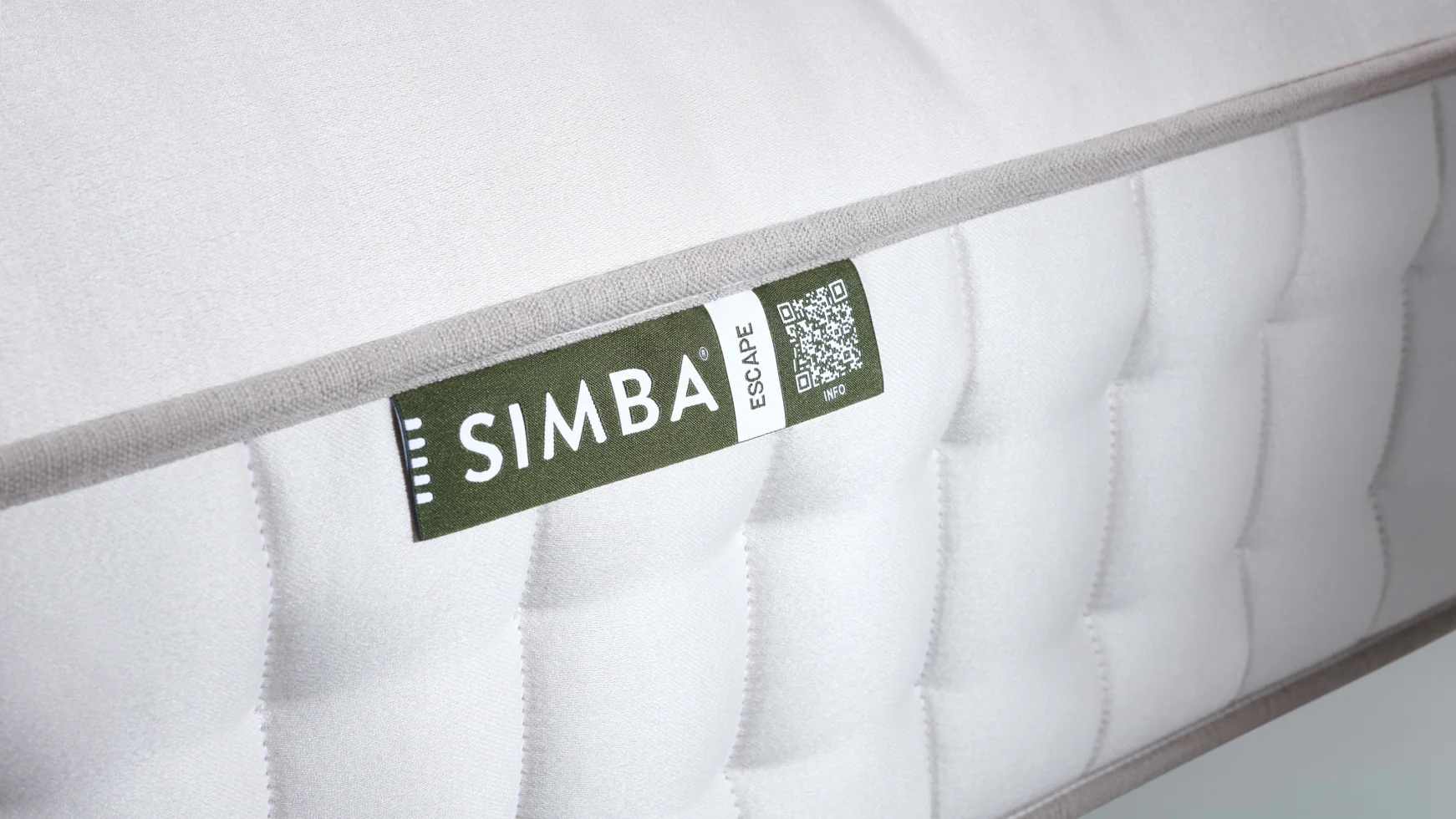
Beyond the appearance, choosing natural materials doesn’t mean abandoning technological innovation. Simba has used advanced techniques to ensure this mattress combines comfort with eco-consciousness. This includes switching glue for sonic welding and blending hemp with flax for superior moisture control.
There's no compromise here. The natural materials feel like a smart sleep choice, not just a move towards sustainability. While the mattress isn't perfect, this isn't the fault of the eco-conscious build.
3. They are firmer than you think
I tend to sleep on my stomach and I like the freedom to move around during the night. The medium-firm feel of the Simba Earth Escape is ideal for this sleep style, and I felt supported from head to toe thanks to those multiple spring layers. When sleeping on my back, I never had to worry about my hips sinking.
However, this firmer feel isn't for everyone, and lightweight side sleepers might find this mattress too stiff. In fact, lightweight side sleepers could struggle to find any sustainable bed that suits their needs.
The wool, hemp, and flax cushioning of my mattress offers some softness but there's no "hug" feel side sleepers often need at the shoulders. Similarly, the latex foams used by many organic beds tend to suit stomach and back sleepers – something we discovered when exploring 5 reasons you might need a latex mattress not a memory foam.
Of course, mattress firmness is a subjective, and what I consider firm you might consider comfortably cushioned. However, lightweight side sleepers are likely to find their options limited when picking an eco-friendly mattress (but that doesn't mean there isn't one out there for you).
The pros and cons of a sustainable mattress
Many mattresses use foams as part of the construction. Foam adds as contouring softness to a bed, cradling the body and providing relief at the major pressure points. However, many foams consist of polyurethane, a non-biodegradable chemical with a production method that often results in air pollution.
To counteract this, some manufacturers are opting for alternative materials. Some brands are manufacturing foams using natural latex (you can learn more with our guide Dunlop vs Talaylay latex) while others are choosing wool, hemp and other natural fibers.
Sustainable mattresses might use materials you don't always expect to find in a bed, but that doesn't mean they aren't comfortable and supportive. My main takeaway from my time on an eco-friendly bed is that it feels very similar to any other bed, and choosing sustainability doesn't mean sacrificing comfort, innovation, or even luxury.
However, if you're searching for an eco-friendly mattress, there is a lack of choice. I hope to see a better range in the future, but right now there are limited options. In addition, I haven't touched on it here, but sustainable beds tend to be more expensive, especially as the market is still small. Overall, if you want to shop organic or environmentally-conscious, be prepared for a smaller selection.
Sign up to get the BEST of Tom's Guide direct to your inbox.
Get instant access to breaking news, the hottest reviews, great deals and helpful tips.

Ruth is a staff writer at Tom’s Guide, covering all things mattress and sleep. She has a deep interest in the link between sleep and health, and has tried enough mattresses to know the right bed really can make a difference to your wellbeing. At Tom’s Guide she writes to help people sleep better, from how-tos to the latest deals to mattress reviews, and has interviewed an array of specialists who share her passion. Before joining the team at Tom’s Guide, Ruth worked as a sleep and mattress writer for our sister website, TechRadar.
